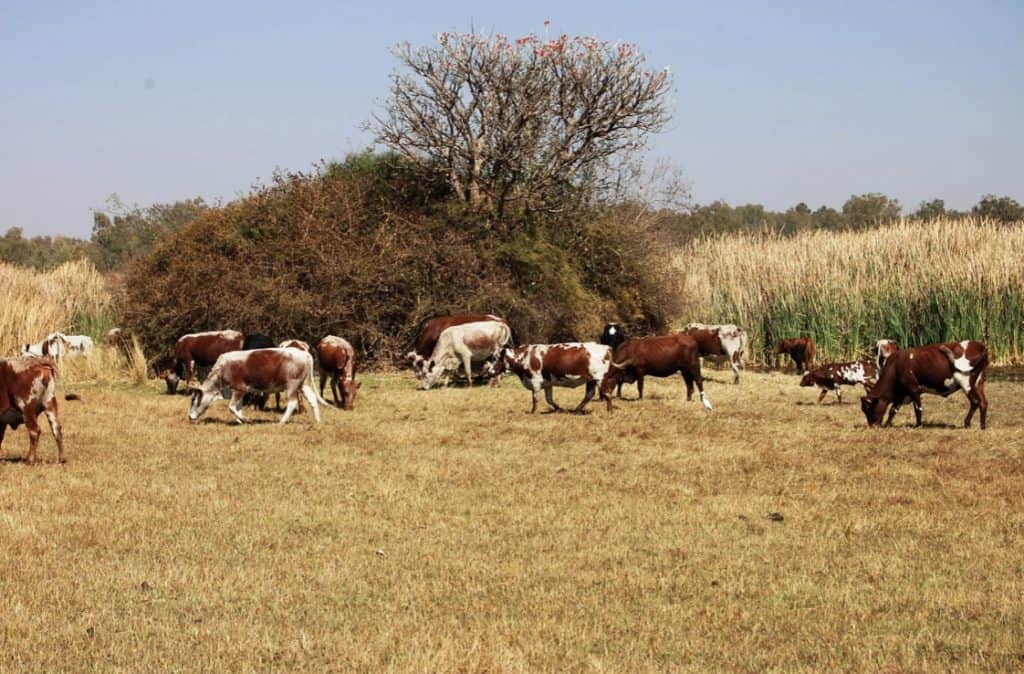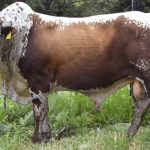ZIMBABWE HERD BOOK-YEAR OF THE NKONE 2023
NEWSLETTER FROM HHN and MH NKONE STUDS
No 6 (2nd. November 2022)
By SEKURU
NOTE: Thank you to the readers of these newsletters and those who have discussed or debated some of the issues. This is healthy and what I originally intended. I am by no means an expert but just an ordinary farmer who loves his cattle and I have my own ideas and way of doing things, which will not necessarily be the same as those of others and are not necessarily better ideas.
Please forgive me if my topics are a bit repetitive at times, some are very important in my mind.
Every one of us has something to learn from others. If these newsletters achieve that, I am happy.
Foot and Mouth, Bulling and Grazing.
Foot and Mouth disease has reared its ugly head with a new outbreak in our area, resulting in quarantine and movement restrictions for us in the immediate future. The Veterinary authorities have reacted quickly to the outbreak and hopefully they will be able to contain the disease and issue movement permits once more.
Many older Lowveld ranchers will remember the battles we had with F&M. Outbreaks were very much part of our cattle ranching in the early Lowveld days, F&M was endemic in that area and regular outbreaks occurred. Red Zones and Buffer Zones, veterinary brands, regular inspections, strict movement regulations, mouthing of all cattle leaving the ranch, vaccinations and quarantine, for almost a whole year in one instance, were all part of our normal ranching calendar and kept our lives interesting to say the least, never mind the large financial losses and grazing shortages because we couldn’t sell or move cattle. I can remember a major outbreak when the Veterinary Department put in hundreds of kilometres of new fencing in a few days to create a patrolled Buffer Zone boundary and also vaccinated the tens of thousands of cattle within the Zone at the same time. An almost unbelievable feat by very dedicated personnel.
One thing that was very obvious in those days was that indigenous Sanga cattle were much less seriously affected by Foot and Mouth disease as the exotic cattle which suffered fairly badly. Indigenous Communal cattle and improved Mashona, Tuli and Nkone on the ranches showed fewer symptoms and lesions in comparison to the exotics and recovered quickly without losing too much condition.
As we patiently (or impatiently) wait for the start of the rains and calving to begin, in the next week, I realise again just how important it is to plan the breeding season to coincide with nature’s seasons. Our calving will start in a weeks’ time. If good rains come before or around then, the new grass will get well away to help the cows to produce maximum milk by the time the calves are grown enough to make full use of it. In our case this timing has been decided by a bit of luck and some common sense. Bulling and calving must also fit in with nature, rainfall, and the best grazing as well as optimum condition of your cows. We have now established a fixed 42-day bulling from 27th January to 10th March, and from our production results these dates seem to suit our environment, management and Nkone cattle. The problem can be that should your present breeding programme be badly out of sync with nature’s best timing, and you are on a closed bulling season, it is very difficult to change without losing considerable production for a few years. If your timing of bulling and calving is so much out of kilter that you are only achieving very poor production, it might be best to bite the bullet, take the bulls out and start again at the optimum time or change to an open bulling season to achieve the best production for your conditions, type of cattle and management. Happy cows are productive cows.
The timing of bulling, calving and weaning is supremely important and should correspond to optimum natural conditions to ensure the breeding herd achieves maximum success and profitability. A short bulling season means only your most fertile cows get in calf, in our case, 85% average so far, (just over 60% of our cows fall pregnant in the first 30 days of bulling), and our calves are born within 42 days, making a nice even-same-age-sized group for the rest of their lives. As long as one does not try to excessively force or artificially manipulate the natural seasons and management of your cows, including the grazing, and instead work with nature, you will achieve maximum production with naturally hardy and fertile cattle like the Nkone.
Most of us are forced to herd our cattle on minimal grazing these days and we, with our Nkone herd, have adopted a very simple basic system, letting the cattle choose the grazing that they want. And so, we go around the available grazing continuously but not over-restrictively. We try to graze new growth only when it has reached beer can height, (Dr Japie Jacksons very practical grazing philosophy) and to get as much use out of our Hyparrhenia grass top-land during early summer before it becomes too coarse, burning certain areas at the first rains. Vley land and the dam-shoreline of Panicum repens are grazed mostly in winter, but very importantly everything is flexible and the cattle usually make the decisions. But NOT when they want to graze the landowners maize crop!
There are many different grazing systems from purely selective grazing to purely non-selective grazing and everything in between and just as many arguments for every system, some very heated! Whatever the system, sticking to the optimum stocking rate for your grazing must be the first consideration. There are too many overstocked and degraded areas with consequent lack of production in our country. Animal welfare and productivity come a close second and naturally follow and the farmer must find the best practical grazing plan for his particular conditions and management style. I have researched most of the popular grazing systems, many suggesting double the stocking rate, and also seen many in practice. Most importantly, common sense and flexibility should be adopted to find the system that suits you and your cattle. This is probably a combination of many of the more sensible parts of many different systems. Dr Japie Jackson’s grazing philosophies make the most sense to me and one can’t go wrong adopting his principles. Keep your cattle contented and everything falls into place.
The Nkone breed, after thousands of years of adapting to different conditions, will always make the best of whatever grazing is available.
“NKONE, THE ORIGINAL ALPHA MOTHER COW”

Summer Panicum repens on dam floodplain.

Burnt Hyparhennia grassland at maximum palatability and protein content after rain. See old grass beyond and thick unpalatable ligneous stalks of what was totally unusable grass left by fire.

Dry season panicum repens










